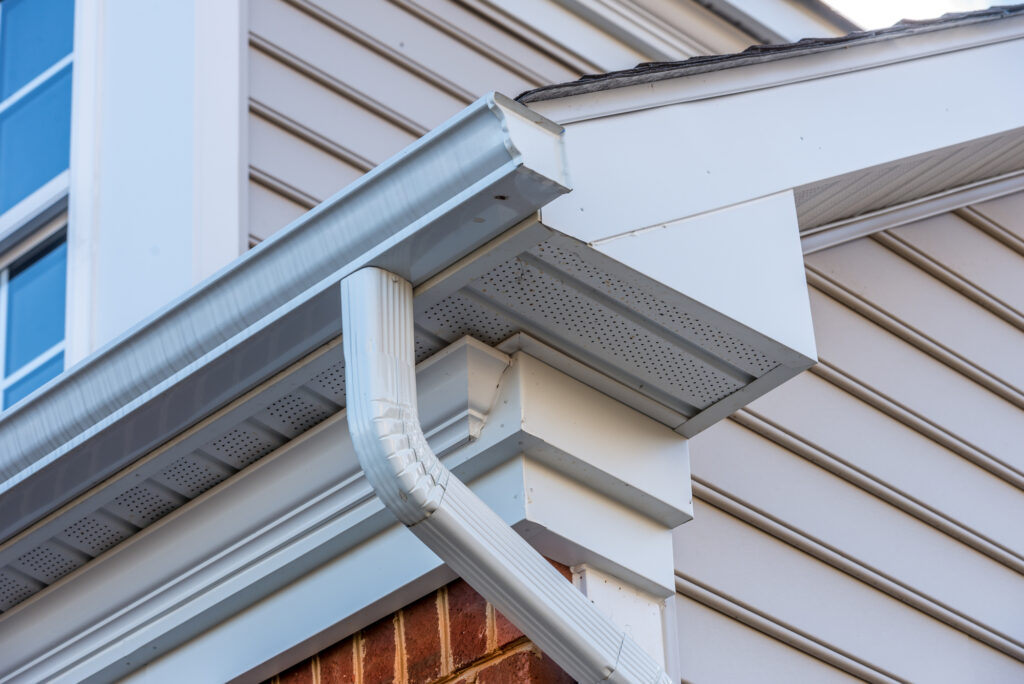Thinking about a new roofing installation including the types of vents that will work best for your building? Hoping to improve your home’s energy efficiency and air quality, as well as the lifespan or your roof? From repairs to replacements, customizing the right roofing ventilation plan for your residential or commercial building is an important part of any roofing project. The following highlights the benefits of a drip edge vent, which might be an ideal choice depending on the size and slope of your roof.
What is a Drip Edge Vent?
Roof vents, including drip edge vents, serve several meaningful functions in supporting a healthy home environment and roof throughout the year. From expelling hot, humid air in summer to helping prevent ice dams in winter, strategic roof ventilation can work in tandem with other facets of a structure’s ventilation system to assist with temperature and moisture regulation, as well as air circulation. Furthermore, as highlighted by the CDC, a home’s ventilation also contributes to the reduction of virus particles and helps mitigate other health concerns, such as allergens.
For homes with little to no soffit area, then a drip edge vent is a popular option because it combines venting with a drip edge to provide needed intake airflow. Drip edge vents are designed to allow for balanced airflow from the soffit to the ridge, which helps equalize temperatures. This helps reduce heat and condensation in the attic, which in turn helps reduce the risk of excessive moisture that might lead to mold and/or ice dams. Additionally, in areas with regular rain and snow, such as the greater Boston area, installing drip edge vents can aid in bringing fresh air in while directing water away from the roof.
Why Install Drip Edge Vents?
Energy.gov emphasizes the value of ventilation in creating an energy-efficient home. In addition to potentially reducing monthly bills, both ventilation and roof deck drainage systems can also make the most of the investment you’ve made in your roof by supporting its greater longevity. To help understand if drip edge vents are an option, the following offers some of the benefits:
- Drip edge vents are a type of passive ventilation, which means that they use wind and temperature variation to promote air movement. The openings in the vent enable air to flow in and out without additional electrical output and related expense. Consequently, they are also a better option for reducing one’s environmental impact. Other types of passive ventilation include soffit vents, ridge vents, and gable vents.
- Since they can help direct water away from the roofing structure, the design of drip edge vents can help protect a building from costly damage due to moisture accumulation in addition to facilitating air flow, which may help reduce the potential for a variety of common issues:
- Ice dam prevention: By guiding water away from the roof, a buildup of water underneath the shingles is less likely. Consequently, the potential for roof leaks and other water damage may be reduced. Especially in areas like New England, where rain and snow are common, ensuring that the design of roof vents accounts for such weather is essential.
- Wood Rot: Whether from the accumulation of moist, humid air in an attic space or consistent exposure to wet conditions, wood components of a roof’s anatomy can be susceptible to rot. Having drip edge vents in place is one way to aid in protecting the structural integrity of the roof and the safety of those who dwell beneath it.
- Water damage to siding and foundation: Instead of having more water falling on the house or along the foundation, drip edge vents can help extend the length of the eaves beyond the exterior building walls and help lessen wear and tear on these features.
- Mold: When it comes to a home’s air quality, it’s not simply the germs that you or your kids may bring into the house that you have to worry about. Like wood rot, mold or mildew may become a problem in locations that are more frequently subject to moisture. As discussed by the EPA, molds can cause a number of health issues, such as allergic reactions, asthma attacks and irritation of the eyes, nose and even skin.
A balanced approach to ventilation is necessary for maximizing its myriad benefits to human and pet health and the overall wellness of your property. With so many roof vents available, including drip edge vents, turn to a qualified and experienced roofing company in your area for guidance! In the greater Boston area, Ranch Roofing proudly offers a number of roofing services, including skylight additions, ventilation improvements, new roofing systems and roof repairs. Contact Ranch Roofing today to get started!
